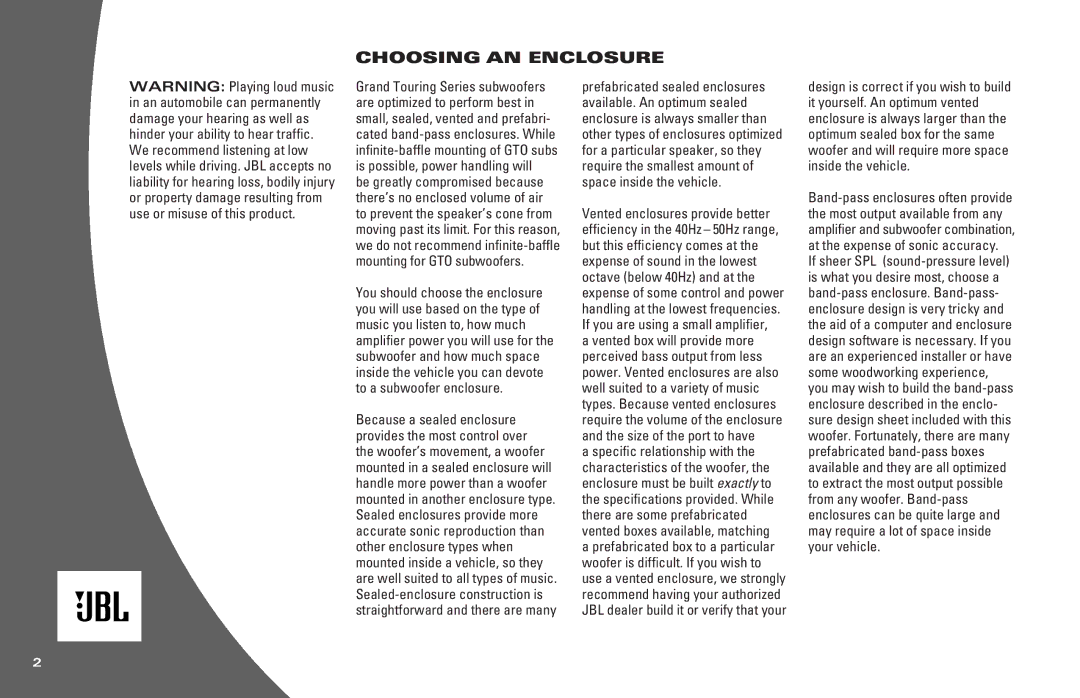1214D, 1514, 1014, 1514D, 1014D specifications
The JBL 1214, 1014D, 1514D, 1014, and 1514 are a series of high-performance loudspeakers designed for a range of audio applications, from home theaters to professional sound systems. Each model is tailored with unique features that cater to specific sound reproduction needs, ensuring clarity, power, and an engaging audio experience.Starting with the JBL 1214, this model is notable for its impressive sound output and durability. It features a robust design with a 12-inch woofer that delivers deep bass and clear mids, making it suitable for both music and vocal applications. The speaker's high sensitivity rating allows for efficient sound reproduction even with lower power inputs.
The JBL 1014D is designed with dual voice coils, allowing for enhanced power handling and flexibility in wiring configurations. This model excels in delivering rich bass performance while maintaining clarity in the midrange frequencies. The integration of advanced cone materials ensures that the speaker is not only lightweight but also highly resilient against the rigors of regular use, making it a favorite among sound enthusiasts who demand consistent performance.
Moving on to the JBL 1514D, this model takes sound quality to the next level with an even larger 15-inch woofer. This size increase translates to deeper bass and a more dynamic soundstage, ideal for larger venues or home theaters. The 1514D also includes sophisticated technologies like JBL’s patented PolyPlas cone and a high-temperature voice coil, which enhance the speaker's thermal efficiency and overall longevity.
The standard JBL 1014 model also showcases several admired features, including a compressed polyether to reduce distortion and improve sound fidelity. It is a versatile choice for both professionals and casual users, easily integrating into various sound systems while providing an excellent performance output.
Lastly, the JBL 1514 introduces an innovative acoustic design that focuses on reducing unwanted resonances. The speaker is engineered with advanced damping materials that improve sound clarity and minimize distortion at high volumes, ensuring a true-to-source audio experience.
In summary, the JBL 1214, 1014D, 1514D, 1014, and 1514 models stand out as top-tier options in the loudspeaker market, each contributing unique characteristics and advanced technologies that cater to diverse audio needs. Whether for home use, professional setups, or event spaces, JBL’s commitment to sound quality and performance continues to resonate across these acclaimed models.

